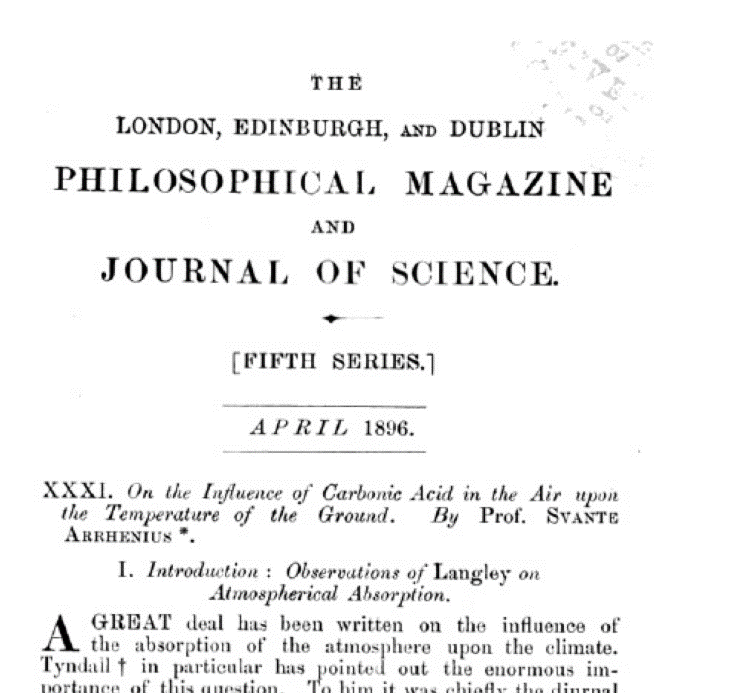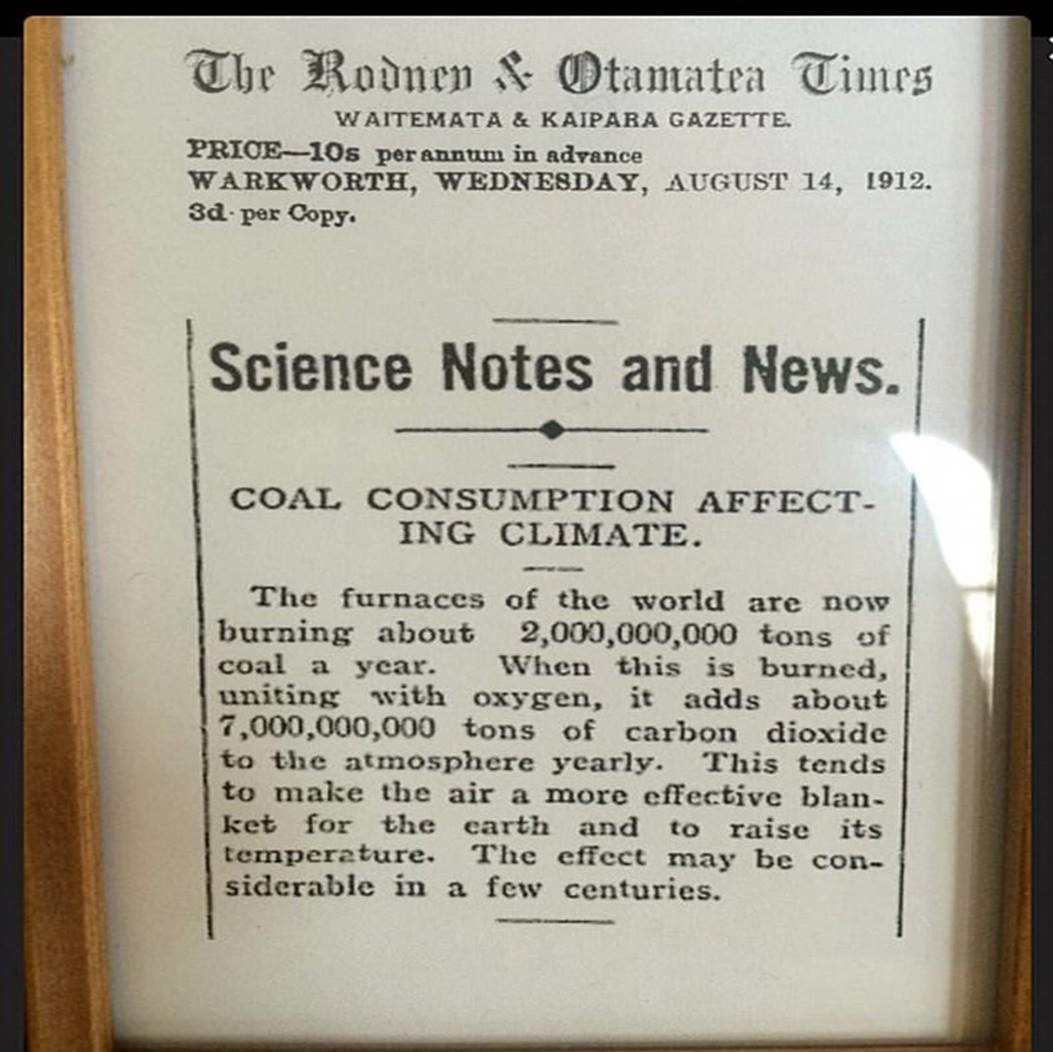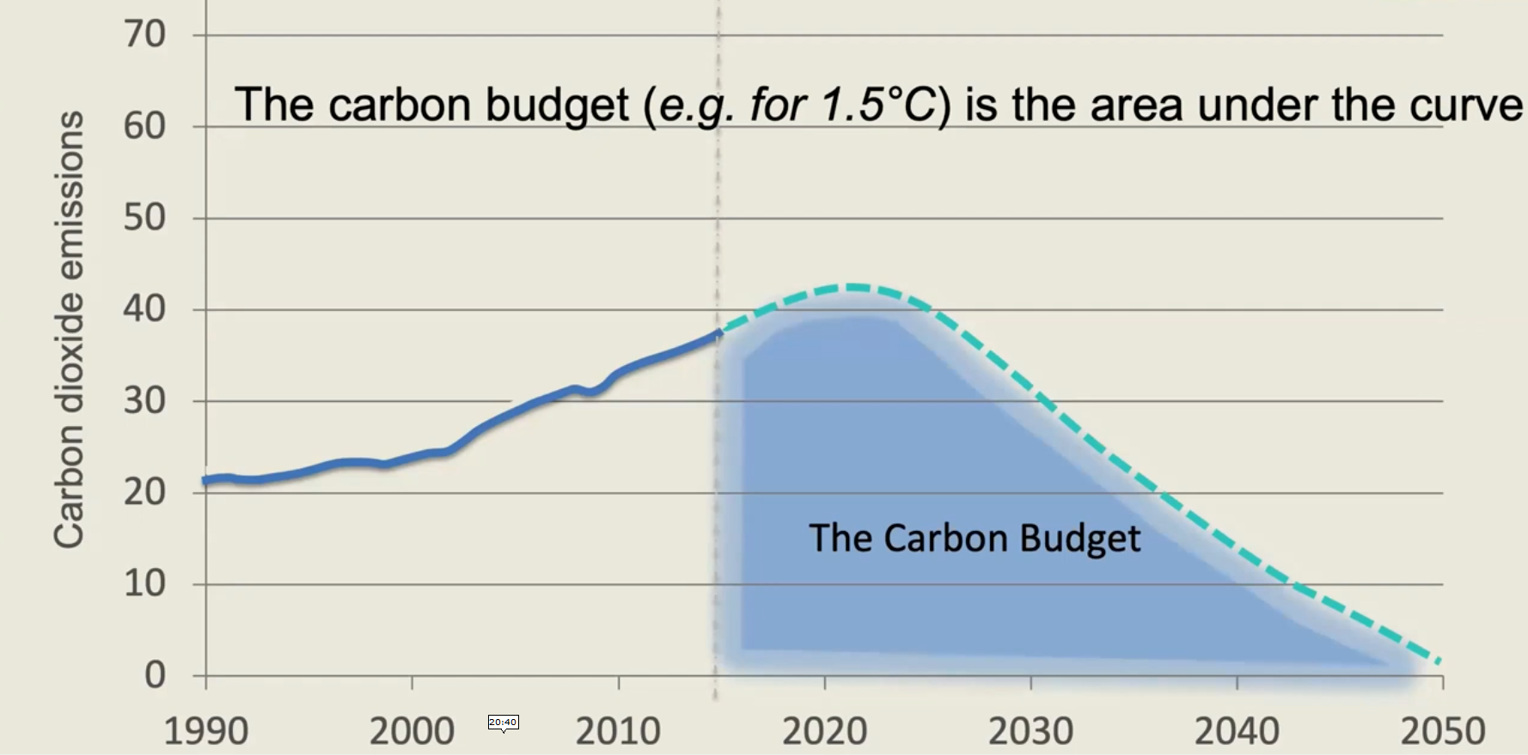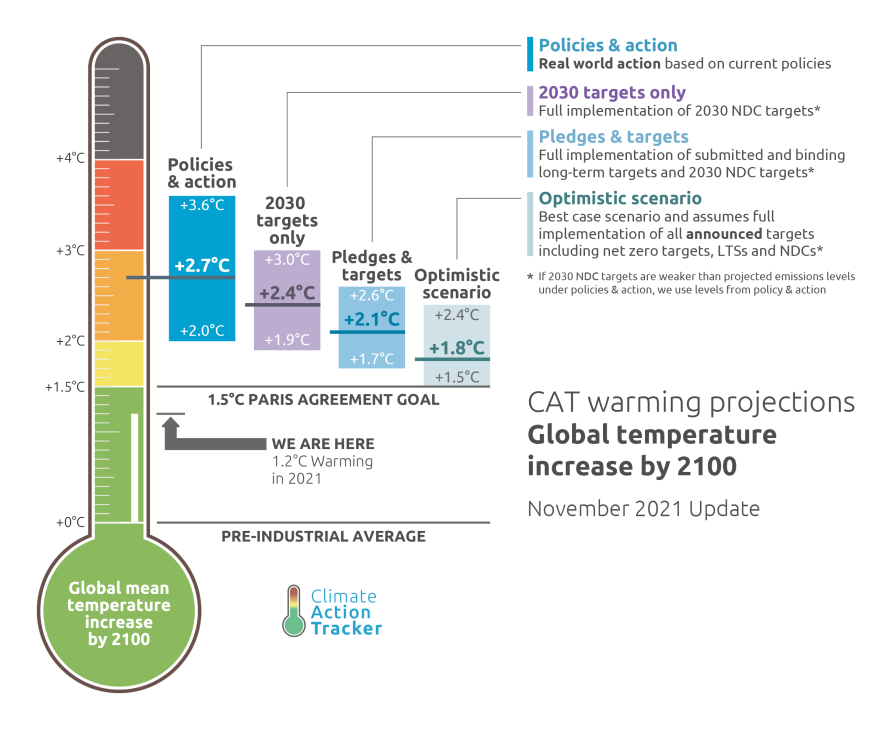History of Climate Change
Revised 2 December 2023
The role of carbon dioxide (CO2) in the atmosphere and the greenhouse gas effect was known over a century ago by scientists. Svante Arrhenius published a paper on climate change in a peer reviewed international journal in 1896 as shown in Figure 1.

Figure 1: Svante Arrhenius April 1896
A few years later, the general public was also aware of the global warming effect of CO2 in the atmosphere due to the burning of fossil fuels. Figure 2 shows an example of a publication in a New Zealand newspaper, The Rodney & Otamatea Times, published in 1912.

Figure 2: The Rodney & Otamatea Times 1912
A century later, virtually every nation in the world agreed to work together to achieve net zero greenhouse gas emissions by 2050 in the 2015 Paris Agreement. The 2015 Paris Agreement was adopted by a resolution of the United Nations General Assembly. The target of the2015 Paris Agreement was to hold the global average temperature to well below 2 degrees Celsius above pre-industrial levels and to pursue efforts to limit the temperature increases to 1.5 degrees Celsius. Reductions would be undertaken in accordance with the best science and on the basis of equity. It was recognised that the less-developed nations would require financial assistance from the well-developed nations. The 2015 Paris Agreement recognised that business-as-usual emissions of greenhouse gases must be curbed. Adoption of a carbon budget was agreed upon. The budget is an annual reducing budget, the total size of which is represented by the area under the curve of projected reductions in carbon dioxide emissions as shown in Figure 3.

Figure 3: Carbon Budget Required to Mitigate the Impact of Climate Change
Unfortunately, there is a smoke and mirror difference between agreement by world leaders and actual action. Action by our world leaders to mitigate the impact of climate change have been repeatedly delayed until the next meeting. Meeting after meeting has resulted in a lot of hot air. Greta Thunberg has summarised these meetings as being "blah, blah, blah:. The COP26 meeting held in November 2021 was no different. Over the last 50 years there have been over 34 climate conferences, a half dozen major international climate agreements and various scientist’s warnings. Greenhouse gases emissions have continued to accumulate in the atmosphere unabated. Action to match the words have so far been a dismal failure.
In 2019, New Zealand declared a Climate Emergency. As of November 2021, there has been so far no sweeping and rapid social change in New Zealand towards mitigating the impact of climate change. New Zealand’s Net Zero Carbon by 2050 policy essentially supports incremental adjustments to business as usual.
Climate Action Tracker published a November 2021 update.

Figure 4: Carbon Action Tracker (2021)
As of November 2021, climate warming was 1.2 degrees Celsius above pre-industrial levels. In a best case optimistic scenario which assumes full implementation of all announced targets, our climate would be heading towards 1.8 degrees Celsius and as high as 2.4 degrees Celsius above pre-industrial levels by 2100. More commitment is required to keep under 1.5 degrees Celsius. In a real world action scenario based on current policies, our climate would be heading towards 2.7 degrees Celsius and as high as 3.6 degrees Celsius above pre-industrial levels by 2100. This scenario represents a severe existential threat to all life forms on Earth. Urgent action is now more than ever necessary, but the focus of world leaders is currently on COVID-19
Most people in many countries agree that climate change in the long-term is as serious a crisis as Covid-19. However, focus of attention is on the short-term and immediate impact of Covid-19. Climate change is not going to go away, and the longer we delay in reducing our greenhouse gas emissions, the more greenhouse gases accumulate in the atmosphere, and the more dire the impact of climate change becomes. Immediate action is required on both fronts.